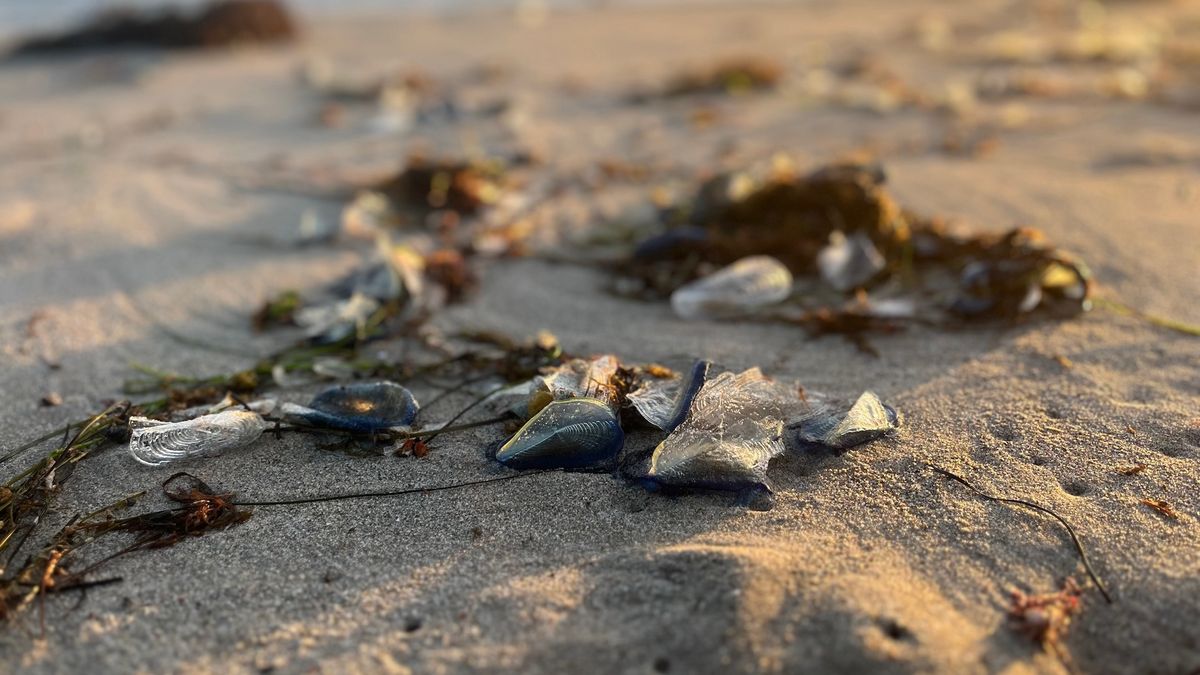Rubbery blue sea creatures are washing up on California beaches by the thousands.
The translucent blobs, known as by-the-wind sailors (Velella velella), began piling up Sunday (March 30) along several beaches in the San Francisco Bay Area. Although the animals look like jellyfish, they’re more closely related to the Portuguese man o’ war (Physalia physalis).
Each creature, which can grow up to 4 inches (10 centimeters) long, is actually a colony of hundreds of smaller organisms with specialized functions. The velellas’ S-shaped sails crest the surface of the ocean, carrying them through the warm waters they call home, while their short tentacles hang below the water to catch their prey.
By-the-wind sailors’ stings are relatively mild compared with those of their more dangerous cousins, though experts recommend that you avoid touching your face or eyes after coming into contact with one.
Related: The weirdest creatures to wash ashore
These blobs have turned up en masse on beaches around the world before, usually in the spring and early summer. The creatures typically live in the open ocean, but large storms blowing in over the coast can propel them onto shore.
“This time of year the ocean along the west coast transitions into upwelling season,” Jennifer Stock, an education specialist at Greater Farallones National Marine Sanctuary in California, told SFGate. Upwelling occurs when cold, nutrient-rich water rises from deep in the ocean.
“The true start/end of that season shifts every year based on a wide set of variables, but the presence of velellas indicates a shift in winds and currents, and the velellas, which are propelled by wind/current alone, get directed to the beaches,” Stock said.
Because the velellas can’t steer themselves, they get stranded on the beach until either the tide carries them back out to sea or they die. Recent northward winds and storms have carried the animals to the Bay Area over the past week — and experts predict more could wash up in the coming days.
“I would say if we get a nice high pressure system, which is generally associated with nice clear skies, but also upwelling, it’s going to really concentrate them just offshore,” Raphael Kudela, an oceanographer at the University of California, Santa Cruz, told KQED. “And then all we need is a break in that — a low [pressure system] coming through or the high weakening — and then we would probably see a nice big raft of them come washing into the beaches.”
“It’s kind of cool to see,” Kudela added. “They’re really beautiful.”
